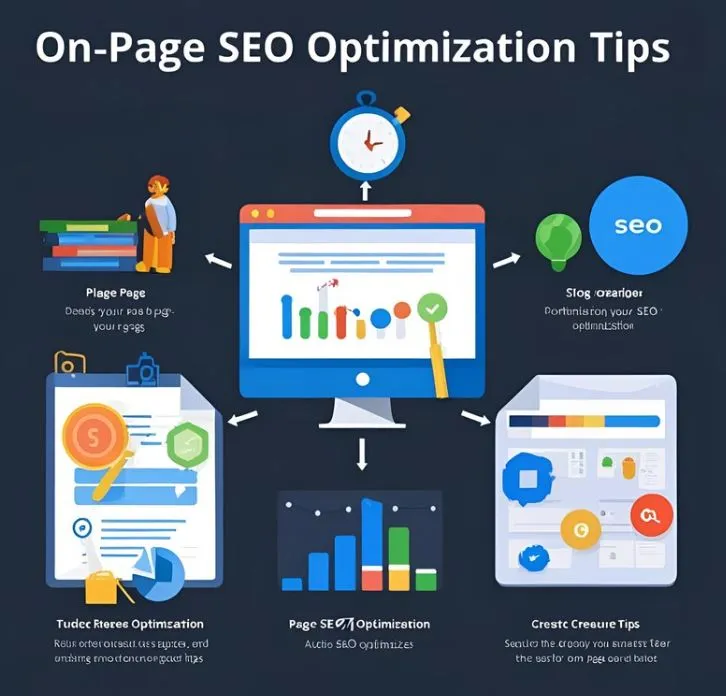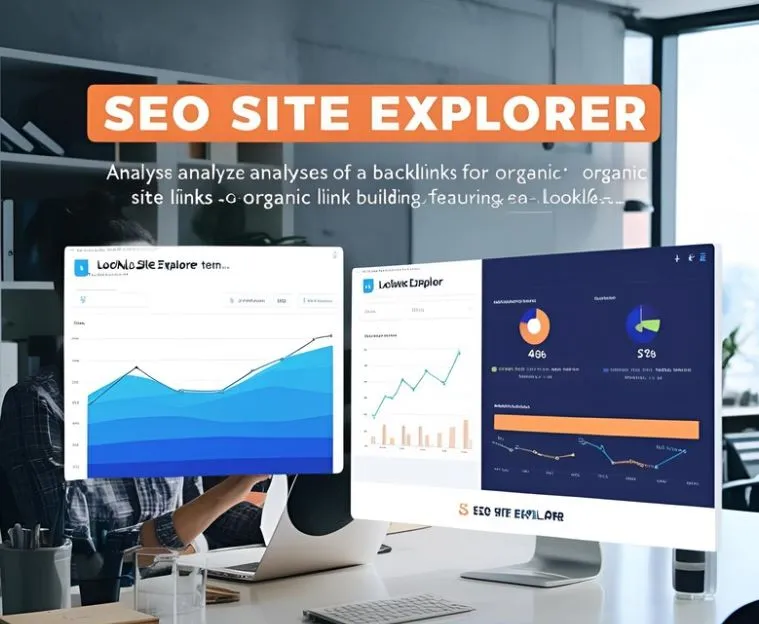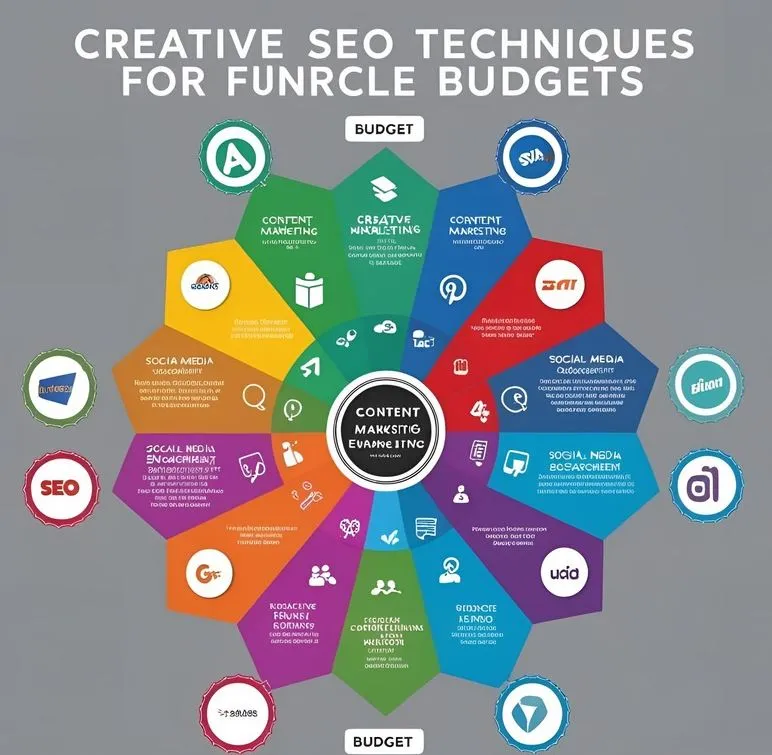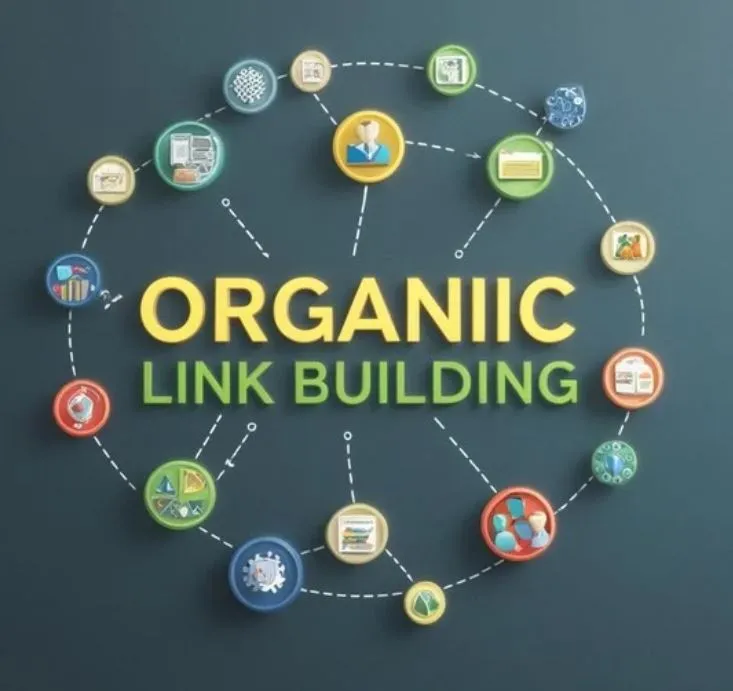
Link building doesn't have to be expensive to be effective.
Startups can thrive using organic strategies like content creation, competitor research, and smart communication.
With persistence and creativity, you can build a strong backlink profile without spending a single dollar.
Analyze Your Competitors' Backlinks
One of the fastest ways to identify link-building opportunities for your startup is by studying the backlink profiles of your competitors. This strategy gives you a roadmap of what’s already working in your niche, without having to reinvent the wheel.
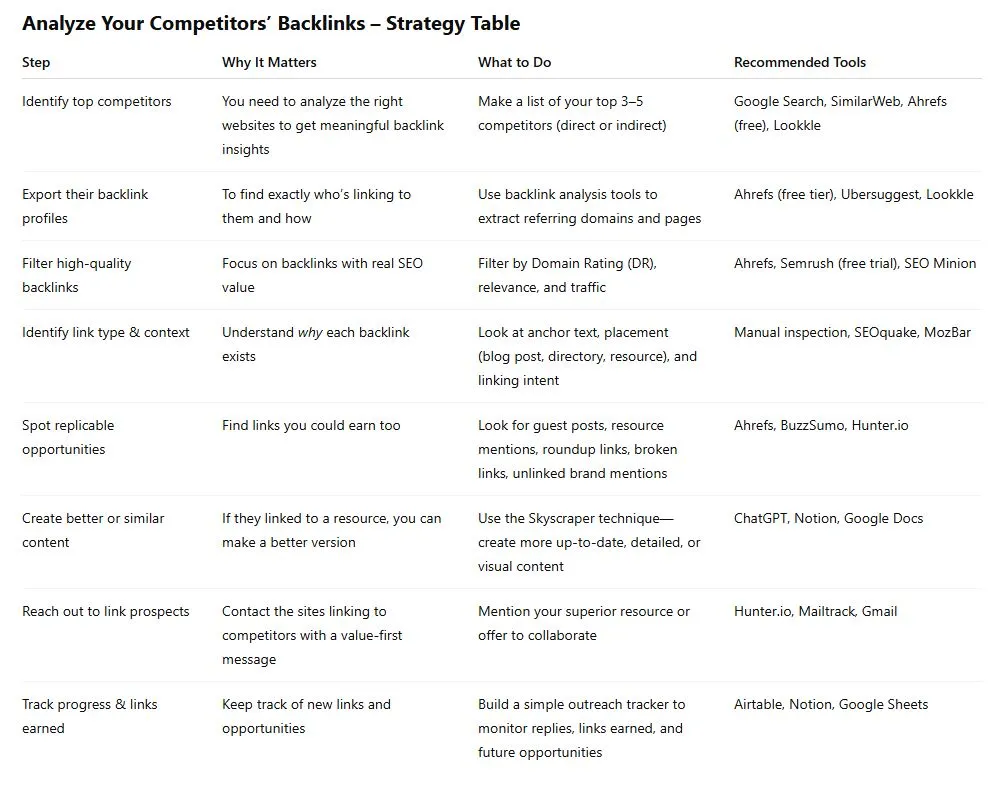
Why It Works
Competitors targeting the same audience often go after similar keywords and content topics. If they’ve already attracted backlinks, it's likely those same sources might be interested in linking to your content too—especially if you can offer something better or more current.
Step-by-Step Guide to Competitor Backlink Analysis
1. Identify Your Top SEO Competitors
These aren’t always your business competitors. Your SEO competitors are the websites that rank on Google for the same keywords you’re targeting. You can find them by:
-
Googling your main keywords
-
Using tools like SEO Site Explorer to see which sites overlap with yours in keyword rankings
2. Use a Backlink Analysis Tool
Free or freemium tools can show you where your competitors are getting links from. Try:
Look for:
-
Top referring domains
-
Anchor text used
-
Linked pages (e.g., blog posts, tools, homepages)
3. Spot Patterns and Opportunities
Are they getting backlinks from:
-
Guest posts on specific blogs?
-
Niche directories or startup listings?
-
Product review sites?
-
Interviews or podcasts?
-
Resource pages (e.g., “Top tools for startups”)?
Make a list of those websites, these are potential backlink sources you can target too.
4. Create Better or Equivalent Content
If your competitor got a backlink because of a blog post, study the post and ask:
-
Can you update the information?
-
Add more depth or visuals?
-
Offer a fresh perspective?
Then, you can reach out to the linking website and suggest your improved version as a resource.
5. Track and Repeat
Regularly repeat this process. SEO is dynamic, your competitors are constantly gaining (and losing) backlinks. Ongoing monitoring lets you jump on new opportunities early.
Create Link-Worthy Content
What Makes Content Link-Worthy?
Not all content earns links. To be link-worthy, your content should offer one or more of the following:
-
Original value – insights, data, or experience that can’t be found elsewhere.
-
Authority – well-researched, factual, and trustworthy.
-
Utility – something genuinely useful like a how-to guide, checklist, or tool.
-
Sharability – content that’s engaging or visually appealing (e.g., infographics).
-
Timeliness – covering trends or news before others do.
Types of Link-Worthy Content for Startups
-
Ultimate Guides & Tutorials
-
Example: “The Complete Guide to Mobile App Marketing for Startups”
These are comprehensive resources that others in your niche can reference and cite.
-
-
Data-Driven Studies or Reports
-
Example: “Survey: How 100 SaaS Startups Acquire Their First 1000 Users”
Original research is incredibly linkable, especially by bloggers and journalists.
-
-
Infographics and Visual Assets
-
Visual content gets shared more and can be embedded by other websites (with a link back).
-
Tools like Canva, Visme, or Piktochart make it easy, even for non-designers.
-
-
Free Tools or Templates
-
Example: A free SEO audit tool, budget calculator, or pitch deck template.
These bring consistent backlinks over time because they provide utility.
-
-
Case Studies and Startup Stories
-
People love real-life examples. Share how you solved a problem, launched a product, or overcame a challenge.
-
Other creators may reference your story in their own content.
-
-
List Posts and Curated Resources
-
Example: “Top 25 Free Marketing Tools for Early-Stage Startups”
These perform well because they’re helpful and easily linkable.
-
Tips for Creating Content That Attracts Links
-
Answer Real Questions: Use tools like AnswerThePublic, Reddit, or Quora to see what your audience is asking and create content that answers those questions.
-
Use Data Whenever Possible: Even small internal data points can be valuable if no one else is sharing them.
-
Format for Skimming: Use headers, bullet points, and visuals so content is easy to read and cite.
-
Keep It Updated: Evergreen content that stays relevant will keep earning links over time.
Promotion Matters
Even the best content needs visibility. Once you’ve published something link-worthy:
-
Share it on LinkedIn, Reddit, Hacker News, and relevant communities.
-
Email journalists or bloggers who cover related topics.
-
Use it in outreach when doing backlink prospecting.
Leverage “Link Reclamation” Opportunities
Link reclamation is one of the most overlooked yet highly effective link-building tactics, especially for startups. It involves finding existing opportunities where a link should already exist (or used to exist), and then politely requesting that it be added or fixed.
It’s low-effort, high-reward.
Why Link Reclamation Works
-
You’re not asking for a new favor—you’re simply asking for a small correction or update.
-
Website owners are more likely to say yes when the request benefits their content (e.g., fixing a broken link or adding a relevant one).
-
You often get high-quality backlinks from domains already familiar with your brand.
Top Link Reclamation Opportunities
1. Unlinked Brand Mentions
Sometimes websites mention your startup by name, but forget to link to you.
How to find them:
-
Set up Google Alerts for your brand name and product names.
-
Use tools like:
-
Mention
-
BrandMentions
-
What to do:
Reach out to the site owner or author with a polite email:
“Thanks for mentioning [Brand Name] in your article! Would you mind adding a link to [URL]? It’ll help your readers find us more easily.”
2. Broken Backlinks (404 Links to Your Site)
Sometimes people link to a page on your site that no longer exists, or the URL has changed—resulting in a 404 error.
How to find them:
-
Use Google Search Console > Coverage > Not Found (404)
-
Use SEO Site Explorer to find broken backlinks pointing to your domain
What to do:
-
If possible, create a redirect from the broken URL to a live, relevant page
-
Or contact the site and suggest updating the link to the new version
3. Incorrect Links (Typos, Wrong URLs)
Occasionally, people link to the wrong page (like your old blog domain or a page with a typo in the URL).
How to find them:
-
Run a backlink audit and review the anchor text + URLs pointing to your domain
-
Look for links that go to invalid or outdated pages
What to do:
Send a quick note with the correct link, thanking them for the mention and suggesting the update.
4. Reclaiming Lost Backlinks
Sometimes websites remove your backlink after an update, redesign, or by accident.
How to find them:
-
Use SEO Site Explorer to track lost backlinks
-
Look for links marked as "lost" or "removed" recently
What to do:
Reach out and ask if there was a reason the link was removed, and if there's a way to reintegrate your content (e.g., by updating it or providing a better link).
Tips for Successful Link Reclamation
-
Be polite and professional. You’re asking for a small favor—make it easy to say yes.
-
Explain the benefit. A correct link improves user experience, avoids broken pages, and strengthens their article.
-
Include the exact link. Don’t make them search for it—copy/paste the URL you’d like them to use.
Write Guest Posts Strategically
Guest posting is still one of the most effective organic link-building strategies, especially for early-stage startups. But to get real SEO value (and not waste your time), you need to be strategic about where you post, what you write, and how you include backlinks.
What Is Guest Posting?
Guest posting means writing an article for another website, usually in your niche, in exchange for:
-
Exposure to their audience
-
A byline and author bio
-
And (ideally) a do-follow backlink to your site
It’s a win-win: you provide quality content for their blog, and you get a backlink plus authority as a thought leader.
Why It Works for Startups
-
You build high-quality backlinks from relevant, trusted sites.
-
You get direct referral traffic and potential leads.
-
You build your personal and brand credibility.
-
You network with influencers, editors, and fellow founders in your space.
How to Guest Post Strategically (Step-by-Step)
1. Identify High-Quality, Niche-Relevant Blogs
Look for websites that:
-
Are in your industry or closely related
-
Have real traffic and engagement (check comments, shares, or SimilarWeb data)
-
Accept guest posts (look for “Write for us” pages or analyze contributors)
-
Link out naturally in their content (some sites are stingy with links)
Bonus Tip: Use search operators in Google like:
your niche + “write for us” your niche + “guest post guidelines” your keyword + “submit an article”
2. Pitch Topics That Add Value
Don’t send a generic pitch. Instead:
-
Read the blog to understand their tone, audience, and existing content.
-
Propose 2–3 relevant, unique topic ideas they haven’t covered yet.
-
Explain why your post will help their audience and why you're qualified to write it.
Sample Pitch:
Hi [Name],
I enjoyed your article on [topic]—great insights.
I’d love to contribute a guest post to your blog. Here are a few topics I think would resonate with your audience:
– [Unique Topic Idea #1]
– [Unique Topic Idea #2]
Let me know if you'd be open to a contribution—I can deliver a well-written post with practical value.
3. Write High-Quality, Original Content
Once accepted:
-
Write something better than what’s on your own blog. Yes, really.
-
Focus on educating or helping readers, not selling your product.
-
Add one or two relevant links to your website naturally (e.g., to a blog post, case study, or tool—not just your homepage).
Make your content so good that it could rank on its own—and so helpful that the site would be proud to publish it.
4. Optimize Your Author Bio
Many sites let you add a short author bio with a link.
Example:
Jane Smith is the founder of XYZ, a platform helping early-stage startups grow through data-driven SEO. Get her free SEO checklist at [your link].
This is a chance to drive clicks and build brand awareness—even if your in-content links are no-follow.
5. Track Results
Use tools like Google Analytics or lOOkkle to:
-
Monitor referral traffic from the post
-
Track any backlinks gained
-
Check how the guest post ranks in search results over time
This helps you decide where to guest post again and what kind of content works best.
Common Mistakes to Avoid
-
Writing for low-quality, spammy blogs just for a backlink
-
Using the same article across multiple sites (Google hates duplicate content)
-
Stuffing your links or making them irrelevant to the content
-
Ignoring the site’s audience or editorial guidelines
Participate in Online Communities
Online communities like Reddit, Quora, Hacker News, Indie Hackers, and niche forums are powerful platforms for startups, not just for exposure and engagement, but also for building organic backlinks over time.
When done right, community participation builds trust, attracts traffic, and earns natural links from users, journalists, and bloggers who discover your insights or tools.
Why It Works
-
These communities are full of high-intent users—founders, developers, marketers, and industry professionals.
-
Helpful content often gets referenced and linked to by others (in blogs, newsletters, or resource pages).
-
Many platforms allow for profile links or contextual mentions that can become long-term backlinks.
-
You don’t need a budget—just time, knowledge, and consistency.
Best Communities to Focus On
Subreddits like:
-
r/startups -
r/entrepreneur -
r/saas -
r/SEO -
r/webdev
How to contribute:
-
Answer questions in detail
-
Share case studies or lessons learned
-
Post helpful tools in “Weekly Share Threads” (when allowed)
✅ Quora
A long-form Q&A platform with evergreen SEO potential.
How to contribute:
-
Answer questions related to your startup’s niche
-
Add value with detailed responses, not sales pitches
-
Link to blog posts, tools, or case studies only when relevant
✅ Hacker News
A curated, developer- and founder-focused community.
How to contribute:
-
Share useful product updates or startup milestones
-
Participate in discussions about tech, tools, and trends
-
Launch your product via “Show HN” with a link to your site
✅ Indie Hackers
A tight-knit community of solo founders and indie makers.
How to contribute:
-
Share transparent updates about your startup journey
-
Ask for feedback and give it in return
-
Publish “Build in Public” stories
Links to your startup are allowed in your profile, your milestones, and contextually when sharing helpful resources.
✅ Niche Forums or Slack Groups
Look for communities in your industry (e.g., design, SaaS, crypto, mobile dev).
How to contribute:
-
Answer specific problems your tool or content solves
-
Share blog posts, tools, or resources with proper context
Example: A cybersecurity startup helping in an InfoSec forum thread could naturally link to a checklist or tool they built—resulting in real, valuable backlinks.
Tips for Success
-
Be consistent – Show up weekly, not once.
-
Prioritize value over promotion – People click (and share) when your content genuinely helps.
-
Fill out your profile – Many platforms allow backlinks in your bio or signature.
-
Link only when it makes sense – Contextual linking beats spammy promotion every time.
-
Document your best posts – They can be reused or repurposed into blog posts or case studies.
Real-World Example
A SaaS founder answers a question on Quora about “how to get your first 100 users.” He includes a link to a blog post titled “How We Got Our First 1,000 Users Without Ads.”
-
The Quora answer gets thousands of views.
-
A marketing blogger finds it, links to it in their roundup.
-
The blog post gets a quality backlink—all for free.
Build Relationships, Not Just Links
One of the biggest mistakes early-stage startups make when trying to build backlinks is treating it like a transaction—cold email after cold email, asking for a link.
But the most valuable, high-authority backlinks don’t come from one-off asks—they come from long-term relationships with people who trust you and your work.
Why Relationship-Driven Link Building Works
-
People are more likely to link to someone they know and trust.
-
You get repeat backlinks, collaborations, co-marketing, and referrals.
-
You build a network that amplifies your content, launches, and growth.
-
It leads to natural backlinks—not forced or negotiated ones.
Online tools that can help you build relationships
1. Find Relevant Influencers and Creators
SparkToro
SparkToro helps you discover where your target audience spends time online, which people influence them, and what content they consume. It's ideal for finding blogs, influencers, and communities where you can start strategic relationships.
Website: https://sparktoro.com
Followerwonk (for X/Twitter)
This tool analyzes Twitter bios and followers to help you find relevant influencers by niche. You can see who they engage with and what their interests are.
Website: https://followerwonk.com
2. Start Conversations and Relationships via Email
Hunter.io
Hunter helps you find verified email addresses of bloggers, journalists, and content creators. Great for sending value-driven emails (not spam), such as thank-you messages or collaboration requests.
Website: https://hunter.io
Mailtrack (for Gmail)
Mailtrack shows you when someone opens your email. Ideal for knowing when to follow up without being intrusive.
Website: https://mailtrack.io
3. Manage and Nurture Relationships
Nexweave / Bonjoro
These platforms let you create personalized videos or dynamic messages. Great for thanking someone for a mention, following up after a collaboration, or simply standing out with a personal touch.
Websites: https://nexweave.com, https://bonjoro.com
Airtable CRM / Notion CRM
Use CRM templates to keep track of your outreach efforts: who the contact is, where you engaged them, follow-up status, and past collaborations. Ideal for managing dozens of contacts for link building and partnerships.
Websites: https://airtable.com, https://notion.so
4. Engage in Communities and Build Visibility
Indie Hackers, Hacker News, GrowthHackers
These platforms are great for sharing your knowledge and building relationships through useful content. You can ask questions, answer others, and participate in AMAs and discussions.
Websites:
https://www.indiehackers.com
https://news.ycombinator.com
https://growthhackers.com
5. Co-Create and Collaborate for Backlinks
Help a Reporter Out (HARO) / Help a B2B Writer
These services connect you with journalists and writers looking for expert quotes or insights. Provide valuable responses, and you may earn a backlink when you're featured in their articles.
Websites:
https://www.helpareporter.com
https://www.helpab2bwriter.com
Useful Chrome Extensions
LinkedIn Helper
Helps automate and personalize LinkedIn interactions, follow-ups, and connections.
Tweet Hunter
Finds high-performing tweets and helps you engage with influencers on X/Twitter through strategic content.
Summary of How to Use These Tools Strategically
| Goal | Recommended Tool | Action |
|---|---|---|
| Identify influencers | SparkToro, Followerwonk | Discover key people in your niche |
| Reach out professionally | Hunter.io, Mailtrack | Start value-driven email conversations |
| Stand out and personalize | Bonjoro, Nexweave | Send thoughtful, personal messages |
| Manage outreach | Notion CRM, Airtable | Keep track of relationships and follow-ups |
| Earn links through content | HARO, Indie Hackers | Participate, collaborate, and provide value |
Tips on SEO and Online Business
Next Articles
Previous Articles
